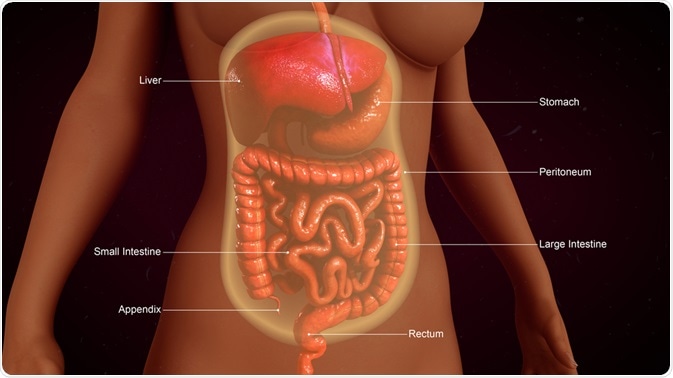Retroperitoneal fibrosis, which is also sometimes referred to as Ormond’s disease, is a disorder characterized by inflammation and the development of scar tissue behind the membrane that surrounds the digestive system, called the retroperitoneal space.

Image Credit: sciencepics / Shutterstock.com
Epidemiology
Retroperitoneal fibrosis is an uncommon disease that affects 1 person per 200,000-500,000 population per year, depending on the specific location.
This condition can affect any individual; however, most patients, the majority of whom are male, present between the ages of 40 and 60 years of age. In many cases, diagnosis is delayed due to the non-specific nature of the symptoms.
The prognosis for patients with retroperitoneal fibrosis varies according to the type. For those diagnosed with idiopathic retroperitoneal fibrosis, the prognosis is relatively good, with the condition having a small long-term effect on the affected individual's quality and quantity of life. However, the prognosis is often poor for malignant retroperitoneal fibrosis, which has an average survival rate of 3-6 months following diagnosis.
Causes
The exact cause of retroperitoneal fibrosis is not known. However, this condition has been associated with various immune-related conditions, suggesting that an autoimmune response may be involved in the pathology of the condition.
Approximately 1 in 3 patients with the disorder have been subject to immune suppression previously as a result of malignancies, medications, aortic aneurysm, or infections, further supporting this hypothesis.
Symptoms
There are various symptoms associated with retroperitoneal fibrosis, although they are not specific to the condition and may be linked to other health conditions with a similar presentation.
Over time, as the condition worsens, the fibrotic tissue can lead to dull general pain in the lower abdomen, back, or side. Other symptoms of retroperitoneal fibrosis may include:
- Fever
- Peripheral edema
- Phlebitis
- Deep venous thrombosis
- Weight loss
- Nausea
- Vomiting
- Fatigue
- Renal function abnormalities
Eventually, the fibrosis can obstruct the blood flow to the lower parts of the body, leading to a disruption in normal bodily function. This can cause pain and swelling, in addition to the damage that it can cause to certain organs, such as the kidneys.
Idiopathic Retroperitoneal Fibrosis: Clinical Presentation, Treatment, and Outcomes
Diagnosis
The diagnosis of retroperitoneal fibrosis is often very difficult, as the symptoms are non-specific and may also be indicative of a number of other health conditions.
If retroperitoneal fibrosis is suspected, there are a number of indicative factors and tests that can help to make an accurate diagnosis. Blood tests, for example, can help to detect abnormally elevated levels of C-reactive protein, urea, creatinine, and other parameters. Diagnostic imaging techniques can also be used, particularly to evaluate the severity of the condition.
In some cases, a biopsy for immunohistochemical examination is needed to assess the disorder, which can help to guide treatment plan decisions.
Management
The recommended treatment for patients with retroperitoneal fibrosis is not clear due to inadequate therapeutic trials and research in the area.
It is currently suggested that surgical and pharmaceutical techniques are integrated to provide optimal care. The aim of treatment is to preserve the function of the kidneys and other organs, exclude malignancy, and provide relief of symptoms.
Surgical techniques include ureterolysis, intraperitoneal transposition, percutaneous nephrostomy, ureteral stenting, laparoscopic surgery, and endourologic treatment. On the other hand, pharmacotherapy may involve the administration of glucocorticoids such as prednisolone, immunosuppressants like azathioprine, or estrogen receptor antagonists, like tamoxifen.
There are several other management techniques that may also be employed to address the specific symptoms that are most problematic for the patient.
References
Further Reading